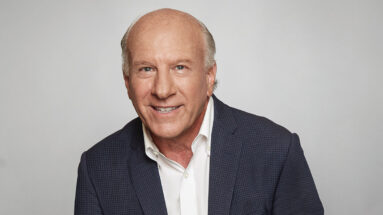January–February 2024
-

Why It’s So Hard to Get Things Done
Magazine ArticleHighlights from this issue
-

Lessons from Large Family Firms About Choosing a CEO
Leadership transitions Magazine ArticleSmart practices that can benefit all types of companies
-

Conservative CEOs Pursue Riskier International Deals Than Liberals Do
Politics Magazine ArticleThey’re drawn by the prospect of greater control.
-

The CEO of Gérard Bertrand Group on Turning a Family Wine Business into a Global Brand
Strategy Magazine ArticleThe company set out to create a new, organic paradigm for the wine industry in the south of France.
-

Leading in the Flow of Work
Leadership SpotlightHow to tap into the right intentions, words, and actions when you need them
-

Leaders Must React
Leadership SpotlightA framework for responding to unforeseen events
-

Why Real-Time Leadership Is So Hard
Leadership SpotlightFour obstacles and how to overcome them
-

How to Sustain Your Empathy in Difficult Times
Leadership and managing people Magazine ArticleManagers are expected to provide employees with more emotional support than ever—and many are burning out. There’s a better way.
-

Leading in a World Where AI Wields Power of Its Own
AI and machine learning Magazine ArticleNew systems can learn autonomously and make complex judgments. Leaders need to understand these “autosapient” agents and how to work with them.
-

To Solve a Tough Problem, Reframe It
Decision making and problem solving Magazine ArticleFive steps to ensure that you don’t jump to solutions
-

Should Your Nonprofit Charge Its Beneficiaries?
Nonprofit organizations Magazine ArticleNominal fees can help organizations have a greater impact.
-

Rid Your Organization of Obstacles That Infuriate Everyone
Business management Magazine ArticleHow every company can fight the “addition sickness” that complicates work
-

Do You Need an External Talent Cloud?
Human resource management Magazine ArticleMost traditional organizations are still hiring in a linear, top-down manner. It’s time for a new model.
-

Turn Generative AI from an Existential Threat into a Competitive Advantage
AI and machine learning Magazine ArticleHow to factor the new technology into your strategy
-

The Right Way to Build Your Brand
Sales and marketing Magazine ArticleThe best ad campaigns make a memorable, valuable, and deliverable promise to customers.
-

The New Rules of Executive Presence
Managing yourself Magazine ArticleHow leaders need to think and act now
-

Case Study: Should I Pitch a New Project-Management System?
Project management Magazine ArticleA newly hired software developer considers recommending changes at an established tech company.
-

Can We Make Middle Age Less Miserable?
Personal growth and transformation Magazine ArticleNew books and a podcast offer insight and advice.
-

Life’s Work: An Interview with Norma Kamali
Careers Magazine ArticleThe fashion designer talks about leading a creative life, running her own business for 56 years, and being “wildly excited” about AI.
From the Editor
Idea Watch
Spotlight
Features
Experience
-
Lessons from Large Family Firms About Choosing a CEO
Leadership transitions Magazine ArticleFamily businesses are infamous for nepotism and infighting, especially when it’s time to appoint a new CEO. But when global talent adviser Claudio Fernández-Aráoz and colleagues set out to help family firms improve their leadership transitions, they were surprised to find that large family businesses had much better succession practices than their nonfamily counterparts, and they outperformed on several measures after new appointees took the reins. Four practices could help other types of businesses ensure successful CEO transitions: approach succession proactively rather than in reaction to short-term performance issues, bring on a few long-term directors and empower them to lead the process, don’t obsess about formal procedures but double down on rigor, and empower new leaders from day one.
View Details 8.95BUY REPRINT -
Conservative CEOs Pursue Riskier International Deals Than Liberals Do
Politics Magazine ArticleThough evidence suggests that conservatives are generally more risk-averse than liberals are, the reverse is true when it comes to foreign expansion. A recent study showed that conservatives leaned toward overseas acquisitions, which are more perilous than alliances (an approach liberals favored). Why? Because acquisitions gave them greater control, and the desire for it outweighed their fear of loss.
View Details 8.95BUY REPRINT -
The CEO of Gérard Bertrand Group on Turning a Family Wine Business into a Global Brand
Strategy Magazine ArticleIn 1987, when the author was just 22, he inherited a 60-hectare vineyard from his father, who had died in a car accident. At first he tried to balance his life as a professional rugby player with his responsibility to the family wine business, but within a few years he had left the sport to devote himself to creating a new, organic paradigm for the wine industry in the south of France—the largest and most diverse wine region in the world.
Since 1993 he has acquired a number of other estates, for a total of 17. The company now has 400 employees, 400 independent suppliers, and 12 business units around the world. Gérard Bertrand is an internationally recognized wine label with annual sales of about €180 million. When Bertrand began his journey, wines from his native Languedoc were regarded as table wine at best. Today his wines are recognized around the world for their quality, competing with the finest vintages from Bordeaux and Burgundy.
In this article he explains how putting nature—both human and environmental—at the heart of his decision-making has contributed to the company’s success and continues to drive its strategy.
View Details 8.95BUY REPRINT -
Leading in the Flow of Work
Leadership SpotlightLeadership development programs traditionally provide extensive training in how to influence and coach people, give feedback, build trust, and more. A new approach, which draws on faculties everyone already possesses, can greatly enhance those efforts. The leadership-in-flow model focuses on activating your inner core—your best self—by tapping into five energies: purpose, wisdom, growth, love, and self-realization. That can be done in the moment through one or more of 25 actions that take just seconds to perform, like appealing to purpose and values, creating the right frame, affiliating, and sparking joy. Now the basis of a popular course at Columbia Business School, leadership-in-flow can be used by people at all levels to unlock peak performance.
View Details 8.95BUY REPRINT -
Leaders Must React
Leadership SpotlightTo be successful, CEOs must articulate a compelling vision, align people around it, and motivate them to execute it. But there’s one thing that can make or break them: how they respond in real time to unforeseen events.
On average, addressing unexpected issues—which range from fluctuations in stock price, to just-discovered product flaws, to major accidents and crises—consumes 36% of a CEO’s time. That’s a big proportion, and not all those problems merit a leader’s attention. To help CEOs understand which ones they truly need to focus on, Nohria, the former dean of Harvard Business School, has created a framework that sorts events into four categories—normal noise, clarion calls, whisper warnings, and siren songs—and offers guidance on how leaders should handle each type.
View Details 8.95BUY REPRINT -
Why Real-Time Leadership Is So Hard
Leadership SpotlightDo you sometimes feel stuck as a leader, while at other times everything seems effortless? The explanation often lies in your own psychological state. When you’re in the zone, you express yourself naturally, venture beyond the familiar to pursue ambitious goals, embody your highest values, and embrace learning—and can accomplish extraordinary things. But four common stumbling blocks can prevent you from entering it: the misperceptions that there are no alternatives, that there is no hope, that there is no time, and that there is no need for leadership. Those misperceptions can be overcome, however, if you ask the right questions and follow a handful of practices designed to open your mind to a world of possibilities.
View Details 8.95BUY REPRINT -
How to Sustain Your Empathy in Difficult Times
Leadership and managing people Magazine ArticleEmpathic leadership is vital in today’s working world; in fact, employees demand it. But empathy can be emotionally and physically exhausting for managers. “I feel like I’m never enough,” one Fortune 100 executive recently said, “even in my empathy for my people. Anything going wrong with them means I’ve failed.”
Not surprisingly, some managers believe they must make a choice: be empathic and sacrifice their personal well-being for the good of others, or back away and preserve their own emotional health. Fortunately, according to the author, a Stanford psychologist and neuroscientist, this dilemma is more apparent than real. He writes that managers can employ three strategies to lead empathically while maintaining their equilibrium. In this article he describes the strategies and presents a blueprint for the practice of what he calls sustainable empathy.
View Details 8.95BUY REPRINT -
Leading in a World Where AI Wields Power of Its Own
AI and machine learning Magazine ArticleAI has been subtly influencing us for years, but a new generation of vastly more capable technology is now emerging. These systems, the authors write, aren’t just tools. They’re actors that increasingly will be behaving autonomously, making consequential decisions, and shaping social and economic outcomes.
No longer in the background of our lives, they now interact directly with us, and their outputs can be strikingly humanlike and seemingly all-knowing. They are capable of exceeding human benchmarks at everything from language understanding to coding. And these advances, driven by material breakthroughs in areas such as large language models (LLMs) and machine learning, are happening so quickly that they are confounding even their own creators.
For all the wizardry and seductions of these new systems, however, our future can still be in our own hands. In this article the authors offer guidance for managing their effects in the workplace, looking for increased value in that which is uniquely human, and aligning messaging and business practices with a changing, and challenging, debate.
View Details 8.95BUY REPRINT -
To Solve a Tough Problem, Reframe It
Decision making and problem solving Magazine ArticleResearch shows that companies devote too little effort to examining problems before trying to solve them. By jumping immediately into problem-solving, teams limit their ability to design innovative solutions.
The authors recommend that companies spend more time up front on problem-framing, a process for understanding and defining a problem. Exploring different frames is like looking at a scene through various camera lenses while adjusting your angle, aperture, and focus. A wide-angle lens gives you a very different photo from that taken with a telephoto lens, and shifting your angle and depth of focus yields distinct images. Effective problem-framing is similar: Looking at a problem from a variety of perspectives helps you uncover new insights and generate fresh ideas.
This article introduces a five-phase approach to problem-framing: In the expand phase, the team identifies all aspects of a problem; in examine, it dives into root causes; in empathize, it considers key stakeholders’ perspectives; in elevate, it puts the problem into a broader context; and in envision, it creates a road map toward the desired outcome.
View Details 8.95BUY REPRINT -
Should Your Nonprofit Charge Its Beneficiaries?
Nonprofit organizations Magazine ArticleNo matter how creative and ambitious they may be, nonprofits that rely solely on donations and grants to finance their growth often fall short. One way to improve both funding and impact is to add a “more commercial” strategy to the mix—by charging recipients for what the organization would otherwise provide for free. Though that may sound uncharitable, the authors’ research shows that paying nominal fees can give beneficiaries a sense of ownership, boost their engagement, and empower them to demand results. Meanwhile, the revenue from the fees can go back into providing help to even more people.
Several nonprofits, including Project Maji, which builds kiosks for clean drinking water in Africa; Gavi, which distributes vaccines; and Worldreader, which provides books to children in low-income countries, have found success with this approach. Using their examples, the authors describe how to set up an effective payment model. Among other things, nonprofits must assess how the needs of beneficiaries vary, educate them about offerings, and share accountability with them. Most important, they must stop defining impact as access to help and take a broader view of results.
View Details 8.95BUY REPRINT -
Rid Your Organization of Obstacles That Infuriate Everyone
Business management Magazine ArticleThe authors of this piece, both professors at Stanford University, devoted eight years to learning about how leaders serve as trustees of others’ time—how they prevent and remove the organizational obstacles that undermine the zeal, damage the health, and throttle the creativity and productivity of good people. Along the way, they learned that there is both bad and good organizational “friction.”
In this article they focus on addition sickness: the unnecessary rules, procedures, communications, tools, and roles that seem to inexorably grow, stifling productivity and creativity. They show why companies are prone to this affliction and describe how leaders can treat it.
The first step is to conduct a good-riddance review to identify obstacles that can and should be removed. The next is to employ subtraction tools—they list several—to eliminate those obstacles or make it difficult for people to add them in the first place.
The authors show how people and organizations have used these steps to great effect: AstraZeneca, for instance, saved 2 million hours in less than two years by implementing an array of simplification efforts.
View Details 8.95BUY REPRINT -
Do You Need an External Talent Cloud?
Human resource management Magazine ArticleThe biggest headache that global businesses confront today—not to mention their most considerable cost—is figuring out how to secure talent. To address this problem, many individual managers are quietly circumventing their organizations’ standard hiring processes and are turning to digital talent platforms to find skilled help on an as-needed basis. There are now more than 800 digital talent platforms, offering companies the services of millions of highly skilled freelance professionals from around the world. And those freelancers often can get jobs done more quickly and cheaply than full-time workers.
The problem is, most of the managers making this move are doing it privately, simply as a tactical expedient for solving discrete problems or getting through a crunch. That’s a mistake, say the authors. Companies themselves need to develop an open-talent strategy—a fundamentally new approach to hiring that involves thinking of all talent as part of a global network that they can rely on to meet their needs. In this article, the authors describe the new open-talent landscape and explain how companies can take advantage of it by creating an external talent cloud.
View Details 8.95BUY REPRINT -
Turn Generative AI from an Existential Threat into a Competitive Advantage
AI and machine learning Magazine ArticleBy making it vastly easier and cheaper to improve or create products and services that previously required significant human labor and creativity, generative AI has the potential to disrupt or even commoditize many businesses.
Some companies will be able to gain an edge by leveraging publicly available generative AI tools better or faster than their competitors. But that advantage will be only temporary, and using the tools will soon become table stakes.
This means established companies will have to rethink their business strategies and find new ways to add value to their offerings. In this article, the authors consider which types of businesses have the greatest potential to gain competitive advantage from generative AI and which are most likely to be disrupted. They also offer guidance for implementing AI across three levels of sophistication that correspond to an increasingly powerful advantage.
View Details 8.95BUY REPRINT -
The Right Way to Build Your Brand
Sales and marketing Magazine ArticleMore than a century ago the merchant John Wanamaker wryly complained, “Half the money I spend on advertising is wasted. The trouble is, I don’t know which half.” In this article the authors present a solution to Wanamaker’s famous quandary. Drawing on a large database supplied by the World Advertising Research Council to empirically identify what kinds of brand advertising are most effective—both for attracting new customers and for converting them into loyal repeaters—they show that the key to successful brand building is offering a memorable, valuable, and deliverable promise to the customer. What’s more, a well-designed customer promise not only translates directly into sales but also provides an effective framework around which to organize a company’s activities.
View Details 8.95BUY REPRINT -
The New Rules of Executive Presence
Managing yourself Magazine ArticleOver the past decade, as a result of the pandemic, political and economic instability, social movements such as Black Lives Matter, and changing workplace technologies, what people expect from leaders has changed.
Executive presence (EP) is typically perceived as consisting of three elements in descending order of importance: gravitas, skillful communication, and the “right” appearance. The author’s new research shows that while confidence and decisiveness are still paramount for gravitas, pedigree has become less central, and new weight is given to inclusiveness and respect for others. On the communication front, superior speaking skills and the ability to command a room still lead the list of desirable attributes, but comfort on Zoom, a “listen to learn” orientation, and authenticity are on the rise. Projecting authenticity is also key to the appearance component of EP; so are dressing for the “new normal,” having an online image, and showing up in person.
This article offers a playbook for developing six attributes that increasingly factor into executive presence, citing the examples of a dozen leaders who have cracked the code.
View Details 8.95BUY REPRINT -
Case Study: Should I Pitch a New Project-Management System?
Project management Magazine ArticleCynthia is a newly hired software developer at MainFrame, which uses Scrum to manage projects. But she agrees with her coworkers that the company’s methodical and deliberate pace is inferior to the quicker, more loosely structured approach of her previous employer, which used Flow. So when a colleague approaches her and asks her to use her impressive background and credentials to advocate for Flow, Cynthia agrees. But after her pilot project produces mixed results, she wonders whether she should proceed with a presentation to the process-improvement board.
Two experts weigh in: Sonali Raut, a senior data scientist at Munich RE Automation Solutions, and Alex Estevam, a technical program manager at Mastercard.
View Details 8.95BUY REPRINT -
Can We Make Middle Age Less Miserable?
Personal growth and transformation Magazine ArticleFour new books and a podcast offer insights and advice: Hags, by Victoria Smith; Revolting Women, by Lucy Ryan; Wiser Than Me, hosted by Julia Louis-Dreyfus; Learning to Love Midlife, by Chip Conley; and Radiant Rebellion, by Karen Walrond.
View Details 8.95BUY REPRINT -
Life’s Work: An Interview with Norma Kamali
Careers Magazine ArticleThe fashion designer talks about leading a creative life, running her own business for 56 years, and being “wildly excited” about AI.
View Details 8.95BUY REPRINT